Mario Bava and Italian genre film: Gialli and Thrillers
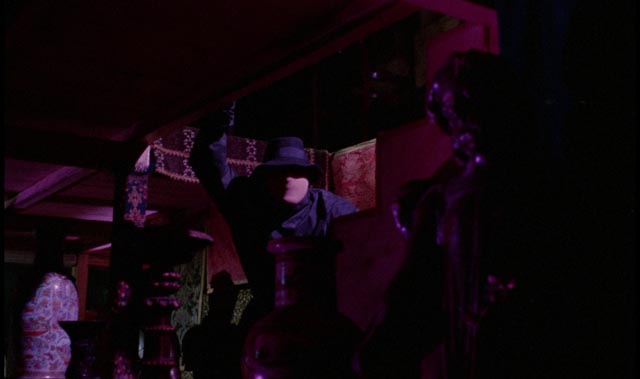
Within four years of launching Italian horror cinema with Black Sunday, Mario Bava paved the way with two seemingly very different films for an entirely new Italian genre, the giallo. This type of thriller dealt with murder and madness in often very lurid – and frequently quite incoherent – ways. The madness of the characters often permeated the manner of filmmaking itself, creating deranged and hallucinatory movies whose style would eventually become their substance. The term giallo itself derived from the distinctive yellow covers of a long-running series of mysteries and thrillers put out by the publisher Mondadori, starting in 1929, within which the works of American writers like Cornell Woolrich were released in translation. The kind of books which inspired film noir in the States became in the hands of Italian filmmakers something quite different.
*
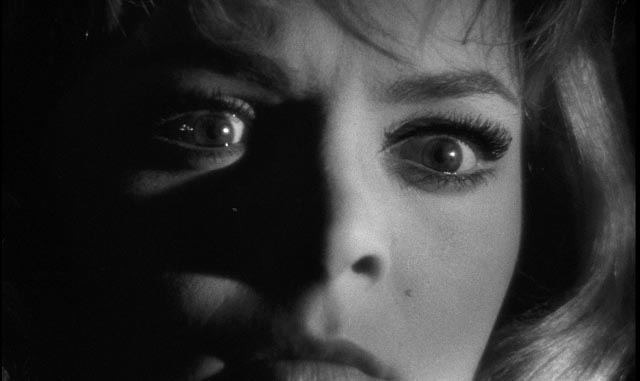
The Girl Who Knew Too Much/Evil Eye (1963)
The Girl Who Knew Too Much (1963) was Bava’s final black-and-white film, a thriller which, as the title indicates, owed a lot more to Hitchcock than to Hammer. Although this film lacks a horror element, its narrative structure provided the fundamental basis for the giallo: an innocent (often a foreigner adrift in Rome or some other Italian city) witnesses a crime, but fails to interpret the event correctly. Compelled to investigate further, the protagonist is drawn deeper into danger before finally understanding what was really seen. Here, that innocent is Nora Davis (Leticia Roman), a young American visiting Rome, who sees a woman stabbed to death on the Spanish Steps, only to find herself disbelieved by the authorities because there is no evidence that the event ever occurred. And finally, as is often the case in gialli, the killer is revealed at the end to be someone almost tangential to the narrative, almost arbitrary; while the madness and crimes turn out to be rooted in some trauma buried deep in the past.
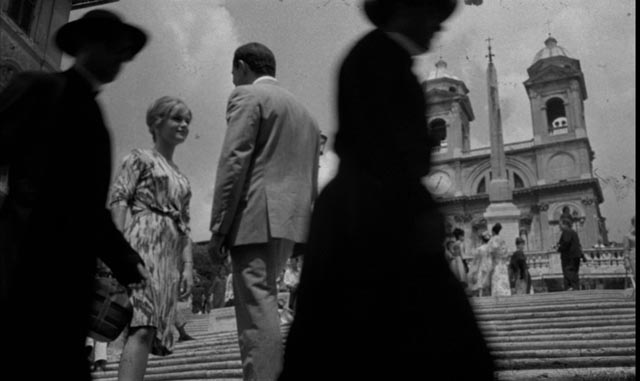
Arrow’s three-disk dual-format edition presents both versions of the film, the original Italian and the re-edited American-International release renamed Evil Eye, from a fine grain interpositive element, the former in a 1.66:1 ratio, the latter 1.78:1. The extras include Tim Lucas’ commentary; an introduction by British critic Alan Jones; an interview featurette with directors Luigi Cozzi and Richard Stanley and writers Jones and Mikel Koven; plus both the international and U.S. trailers.
The booklet contains an interesting essay by Kier-La Janisse, in which she reads the film as a kind of proto-feminist work about the struggle for a female voice to emerge from the genre trappings. This reading privileges Evil Eye over the original Italian version because the U.S. cut does foreground the element of heroine Nora Davis’ psychology and the ways in which her very active imagination interacts with the events of the story. While acknowledging the validity of Janisse’s argument, I have to confess a preference for the original Italian version, even though it does more to repress the female point of view – but this preference is rooted in tone rather than content; I find the somewhat strained comedy of Evil Eye a distraction, while The Girl Who Knew Too Much plays more effectively as a straight thriller.
*
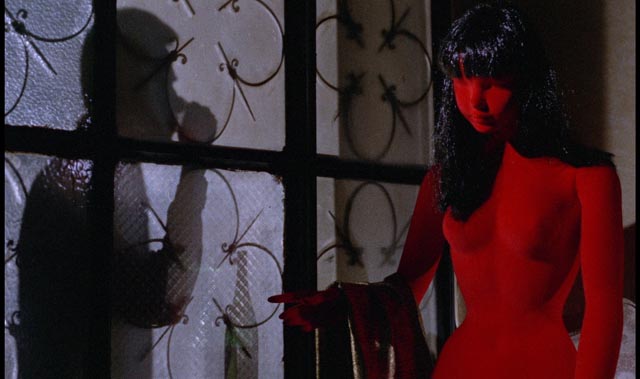
Sei donne per l’assassino/Blood and Black Lace (1964)
Arrow’s most recent Bava release is the hugely influential Blood and Black Lace (1964), a horror-inflected thriller about a series of murders in and around a prestigious fashion house. (The Italian title Sei donne per l’assassino translates as the much more blunt Six Women for the Murderer.) Here, Bava established many of the stylistic tropes which formed the basis of the giallo, perhaps the key element being sheer visual excess. Light, darkness, colour and shadow, everything is pushed far beyond any naturalism, the film’s imagery becoming hallucinatory, almost abstract, relegating narrative to a secondary position. Oddly, this excess is expended on what ends up being a rather ordinary mystery without any of the psychological derangement which is so characteristic of the subsequent genre. It would take the application of this style to the kind of narrative found in The Girl Who Knew Too Much for the giallo to be fully born.
Bava himself left that job up to those who were influenced by him, as he moved on to other things – adventure films, westerns, science fiction, more Gothic fantasies, even a mild sex comedy. He eventually did return to the giallo in 1970 with one of his lesser films, Hatchet for the Honeymoon, but by then the genre was so familiar that that film seemed quite ordinary.
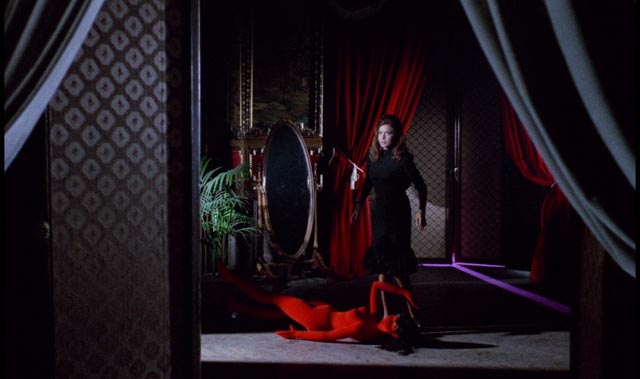
Arrow’s edition of Blood and Black Lace features a 2K transfer from the original camera negative, which for the first time really does justice to Bava’s use of colour, a wildly expressionist style which is the key signature of all his major colour films. Bava virtually painted every frame with gels bathing both sets and locations in pools of intense primary hues – reds and blues predominating – which do far more than the sometimes perfunctory script to evoke a twisted psychological mood which ultimately isn’t supported by the narrative. The sheer beauty of the film’s visuals creates an interesting tension with the cynical, at times disturbingly brutal events depicted.
In addition to Lucas’ commentary, the three-disk dual-format edition of Blood and Black Lace is supplemented with a documentary about the film and the origins of giallo, featuring directors, writers, critics and crime novelists; an appreciation of the film by Hélène Cattet and Bruno Forzani, the Belgian writer-directors of neo-gialli Amer and The Strange Colour of Your Body’s Tears; Yellow, a short homage to the genre by Ryan Haysom and Jon Britt; a visual essay by Michael Mackenzie on the genre’s relationship to the social turmoil of the ’60s; a panel discussion about Bava with Dario Argento, Lamberto Bava (Mario’s son) and critic Steve Della Casa, recorded in 2014; an episode of David Del Valle’s cable show featuring the film’s star, Cameron Mitchell; plus the alternative American opening titles sourced from Joe Dante’s personal print of the film, and the original theatrical trailer. As always, Arrow also includes a booklet with essays and comments on the film by various writers.
*
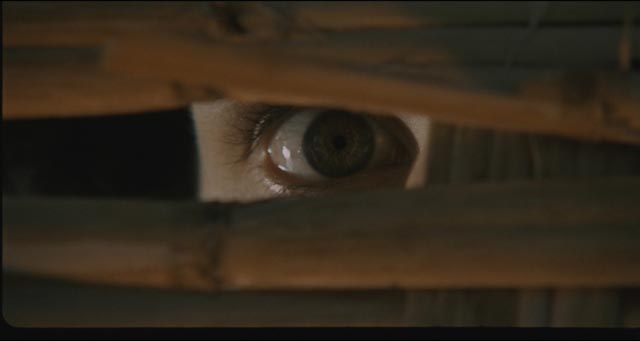
Reazione a catena/Ecologia del delitto/Twitch of the Death Nerve/Bay of Blood (1971)
Bava throughout the ’60s seemed more comfortable with stories set in the past, which could be dressed as visual fantasy – even Blood and Black Lace seems to take place in some alternate universe outside of normal time. Alone of all his films to date, The Girl Who Knew Too Much can be considered an expression of contemporary realism, stripped of mythic properties. But the Gothic was rapidly fading away by the end of the decade and the director was faced with the necessity of moving with the times. After his 1966 masterpiece Operazione paura, aka Kill Baby, Kill (surely one of the most inappropriate titles ever put on a subtle work of Gothic fantasy; and where is the restored Blu-ray of this beautiful work about a mist-shrouded village haunted by the ghost of a murdered child?), Bava returned to his favourite imaginary world only twice, with the rather prosaic Baron Blood and his ill-fated masterpiece Lisa and the Devil.
Stripped of Gothic trappings, his “modern” works laid bare a deep cynicism, even misanthropy. The Agatha Christie-like Five Dolls For an August Moon (1970), although bearing a title worthy of a full-blown giallo, is a variation on And Then There Were None, with a group of uniformly dislikeable people getting bumped off at an ultra modern beach house. That basic narrative idea was pushed to such extremes the following year in A Bay of Blood, that more than any other of Bava’s films, this is an outright black comedy – and very black indeed. The most familiar English title is a bit dull, if nonetheless appropriate, compared to the various alternatives – Twitch of the Death Nerve perhaps being the most vivid, while both Italian variants are very fitting: Reazione a catena (Chain Reaction) and Ecologia del delitto (Ecology of the crime), the latter particularly so since the story revolves around a struggle over possession of a beautiful, as yet unspoiled bay, which several characters want to develop commercially.
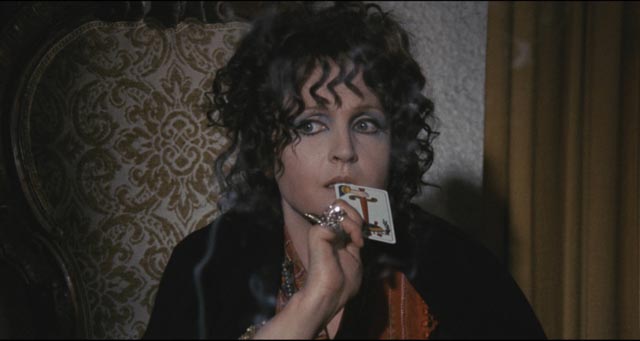
Blood and Black Lace “cheated” in having dual murderers to help mislead the audience; A Bay of Blood, on the other hand, has more than a dozen characters, almost all of whom serve at some point as murderer and then victim. The film’s famous opening has the wheelchair-bound Countess killed in a gruesomely elaborate way by a black-gloved killer (black gloves being de rigeuer for the giallo assassin); but then the camera pans up immediately to reveal the killer’s face … just before he in turn is stabbed to death by another unseen figure. And so it goes, a chain reaction of murder which lays waste to the entire population of the area, all motivated by that desire to either preserve the natural environment or develop it for money. Even the characters who might at first seem sympathetic in their intentions eventually become killers, their moral bankruptcy ultimately contaminating the next generation, leading to the film’s famous shock ending.
A Bay of Blood is not only the oldest of Arrow’s Bava releases (it came out at the end of 2010), it’s also the weakest in terms of technical quality. The transfer is somewhat washed out and artifact-ridden, while the alternate Italian version (not simply a matter of a different dub, but including different takes) is a standard definition mess which looks like a second or third generation VHS. (I understand that Kino’s Region A Blu-ray has a much improved transfer of the English-language version, but repeats this deeply flawed version of the Italian.)
Arrow’s extras include the usual Tim Lucas commentary, in which he points out differences between the two version – the key one being that the actors were more comfortable speaking their own language in the Italian version, giving more natural and nuanced performances than when forced to speak English. There’s a featurette on writer Dardano Sacchetti, a key figure in Italian genre cinema; Joe Dante speaking about Bava; an interview with cameraman Gianlorenzo Battaglia about shooting the film; and trailers for Twitch of the Death Nerve and Carnage (another alternate title) with Trailers From Hell commentary by Edgar Wright.
*
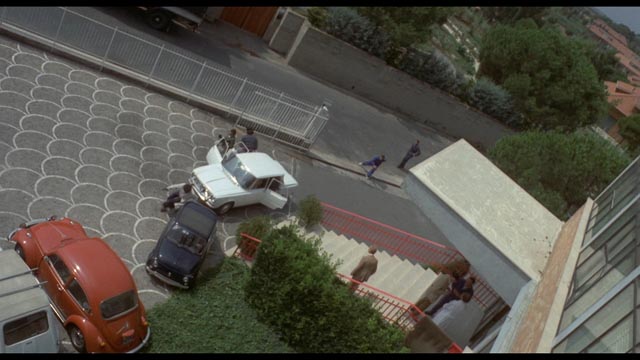
Rabid Dogs (1974/1996)
After the painful experience of the failure of his most personal film, Lisa and the Devil, the 60-year-old Bava set about reinventing himself. If the world rejected his elegant fantasy, he would give it a dose of the harshest reality. In the thriller Rabid Dogs, his version of the then ascendant polizzioteschi genre of brutal crime films, Bava not only demonstrated his consummate filmmaking skills, he actually bested the masters of the genre, such as Umberto Lenzi, Sergio Martino, Stelvio Massi, a generation younger than himself.
In Rabid Dogs, Bava displays a mastery of cinematic realism completely unlike the richly stylized fantasies he was most noted for. After a brutal robbery, three surviving gang members take a woman hostage and then commandeer a car driven by a man with a sick child on the back seat. From then on, the film stays relentlessly in the pressure cooker of the vehicle driving through a hot summer afternoon, with escalating hysteria and violence inevitably bubbling to the surface. It’s a supremely well-crafted movie about the ugliness of human behaviour which finally leads to a completely unexpected ending which, rather than finding some kind of redemption in the carnage, plunges the audience even deeper into nihilistic despair.
This film should have been a whole new start for Bava, and yet it turned out to have an even worse fate than Lisa and the Devil. Made on a shoestring, it was never completed because the production company went bankrupt; even though editing was almost complete and the film had even been scored, all materials were seized and ended up lost in a rights limbo. Bava would never see its release and made only one final feature (the conventional throwback, Shock [1977]) and a one-hour television film (an adaptation of Prosper Merimee’s The Venus of Ille [1979]), both co-directed by his son Lamberto, before Mario’s death in 1980. Rabid Dogs was believed irretrievably lost.
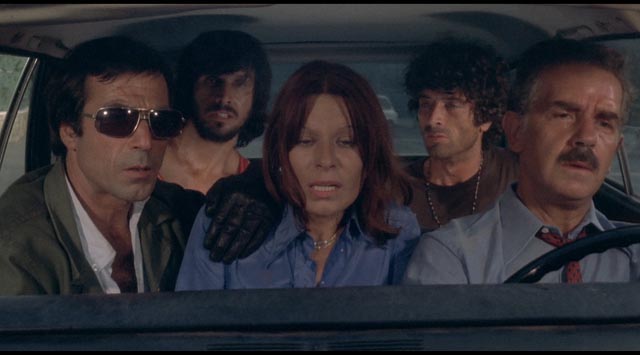
That is, until German co-star Lea Lander managed to put together the resources to recover the elements from limbo in the early ’90s. It took several years, but with the help of Bava fans and Peter Blumenstock in Germany and Tim Lucas in the States, the film was finished, given some screenings, and most importantly released on DVD (possibly the first exclusive release on that format) by Blumenstock’s Lucertola Media. (This, by the way, remains my single most expensive DVD purchase: I got my copy through a last-minute bidding frenzy on eBay and, despite its technical weaknesses, it remains a prized possession.)
But that’s not where the story ends; perhaps predictably, this seeming happy outcome was torn asunder a few years later when Bava’s former producer Alfredo Leone acquired the rights. Leone, back in the early ’70s, had tried to buy the rights to the short story which served as the film’s basis (“Man and Boy” by Michael J. Carroll, originally published in the April 1971 Ellery Queen’s Mystery Magazine), only to have it bought out from under him. Now, the man who had supported Bava through three previous features before their relationship ended with the Lisa and the Devil/House of Exorcism debacle had his hands on another of the director’s masterpieces. It’s tempting to believe that Leone sought some kind of posthumous revenge … but the motives of Bava’s son Lamberto are less clear. Together these two set about “completing” Rabid Dogs, a film so well-structured and tightly put together that it is clearly not only virtually complete in the form in which Bava left it, but is in fact one of the greatest of all Italian crime thrillers. (In his commentary, Lucas suggests that the original release was a “polished rough cut”, pointing out several things Bava himself probably would have removed in a fine cut; co-star Don Baky is quoted as being unhappy with the Lucertola release because he found it all too slow and believed Bava would have tightened it up considerably.)
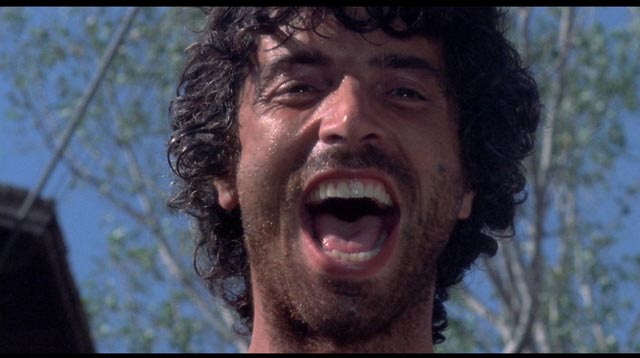
When the project was shelved, it was “incomplete” in the sense that Bava left notes about a few things still to be shot: an allusive opening in which a crying woman would be seen under the main titles, her identity and reasons for crying to be revealed only at the very end; and some shots of a helicopter trailing the car. These latter would amount to little more than inserts and it’s difficult to see how they would be integrated as such a helicopter remains unseen and unremarked by the characters in the car. But based on those notes, Leone and Lamberto Bava shot a bunch of new material, including two scenes with an anxious woman in an apartment, the first of which more or less gives away the final revelation just ten minutes into the film, the second of which shifts the entire movie’s focus at the end from a cynical vision of human venality to the more conventional emotional concerns of a minor secondary character. Worse still, Leone and Lamberto pack the first half with unnecessary exposition and endless shots of a police communications centre, police cars running around making roadblocks, and that helicopter flying around.
All of these changes, constituting Leone’s alternate Kidnapped version, do nothing to illuminate the narrative, but they do serve to disrupt the brilliantly sustained tension of Rabid Dogs (even the re-titling points to the unimaginative, conventional treatment imposed on the material).
In re-watching the short Anchor Bay featurette included on the disk, with Leone and Lamberto talking about what they did, I could feel my blood pressure rising rapidly. They speak of how “crude” and “unfinished” Rabid Dogs was, how much was “missing” from the narrative; Leone even says off-handedly that it was obvious that Stelvio Cipriani’s original score had to be replaced, although to a disinterested viewer, it’s obvious that Cirpriani’s edgy, driving music is a perfect enhancement to the movie’s steadily building hysteria; the replacement score, also credited to Cipriani, seems like generic Muzak by comparison, sapping the film’s energy rather than ramping it up.
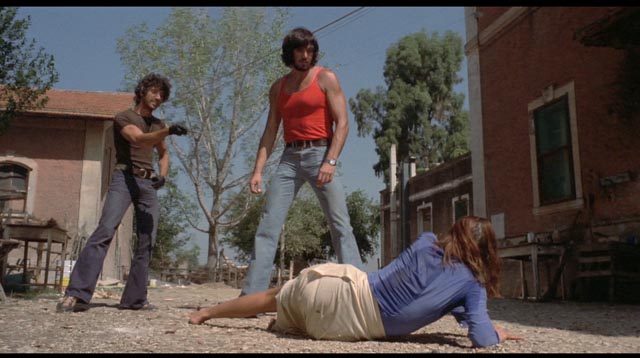
But there is even worse news: when Lander and Blumenstock first finished the film for DVD release, all the work was done digitally on the Avid editing system. Screenings at the time were also done using either tape or DVD. No actual prints were struck. When Leone took over, the film’s negative was cut to conform to the Kidnapped edit. And so no material version of Rabid Dogs exists. Of course, when negative is cut, frames are destroyed and all too often pieces of the film are lost. Faced with this mess, Arrow had a monumental task in trying to create a new hi-def version of the original film.
In re-conforming the HD transfer of Kidnapped to match the Rabid Dogs edit, it was necessary to use a number of standard definition sources to replace those missing sections (sometimes as little as three or four frames), with obvious variations in picture quality. This is initially very distracting when watching the Blu-ray, with the picture at times rapidly flickering back and forth, making it all too apparent that individual shots were cut up into several shorter pieces for Kidnapped. Eventually, these shifts become less of a distraction, and in the film’s second half much of the original version is kept intact. But the fact is, this is what now amounts to the definitive version of Mario Bava’s final masterpiece, its flaws inevitable and irreversible, thanks to the crass interference of Leone and Bava’s son.
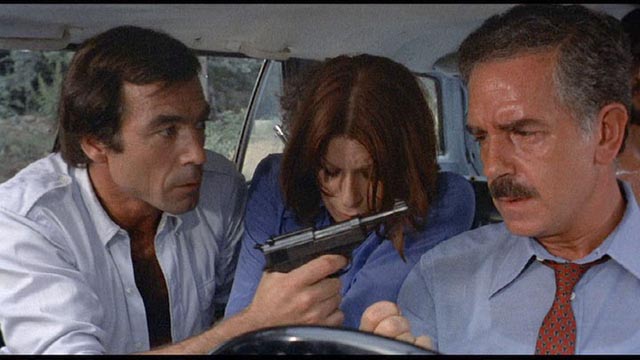
The final insult comes at the end of the featurette when Lamberto has the gall to say that he thinks his father would be really proud to see the film finally finished “as it was meant to be”. As a director with nothing like his father’s talent, it’s difficult not to suspect that there’s a bit of malicious filial revenge buried in all this.
Mario would probably be much more proud of the heroic efforts of Lander, Blumenstock, Lucas and the creative technicians at Arrow who put so much effort into resurrecting this savage masterpiece out of their sheer love of the man’s work.
In addition to the alternate Kidnapped cut (which I couldn’t bring myself to watch again), the three-disk dual-format edition includes Lucas’ commentary on Rabid Dogs; the old Anchor Bay featurette; and a largely irrelevant interview with director Umberto Lenzi (whose ferocious Almost Human, also made in 1974, is one of the few polizzioteschi which can match the intensity of Bava’s film), who has little to say about Bava and nothing to say about Rabid Dogs as he talks in generalities about Italian crime movies. The booklet essays by critic Stephen Thrower, Peter Blumenstock, and Arrow’s disk producer Helen Mullane concentrate on the miraculous resurrection of the film and all but ignore the Kidnapped cut, which is apparently included only for the sake of thoroughness. There’s also a reprint of Carroll’s short story, which turns out to be remarkably close to the film’s narrative, although the latter is skillfully expanded from the source.
*
With most of Bava’s horror films and thrillers now released on Blu-ray, it’s to be hoped that Arrow and/or Kino Lorber will expand their range and put out new editions of other films, like Hercules in the Haunted World, Erik the Conqueror, Knives of the Avenger, Danger: Diabolik, and perhaps even his westerns.
Comments